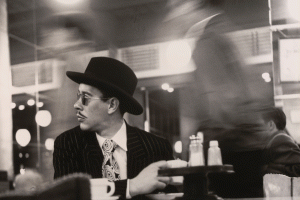
As with his closely related remarks about bop or, in “Harlem is Nowhwere,” about apparently growing signs of crime and disorder in Harlem, those comments show Ellison grappling with some features of African-American life that seemed to him and to many of his contempories new and portentous–and, importantly, not to fit neatly into any of the ideological frameworks they had available.




